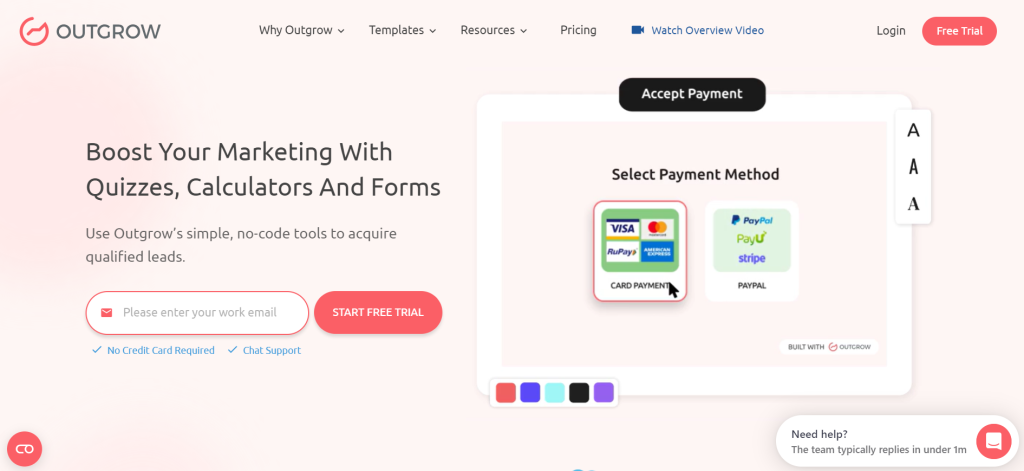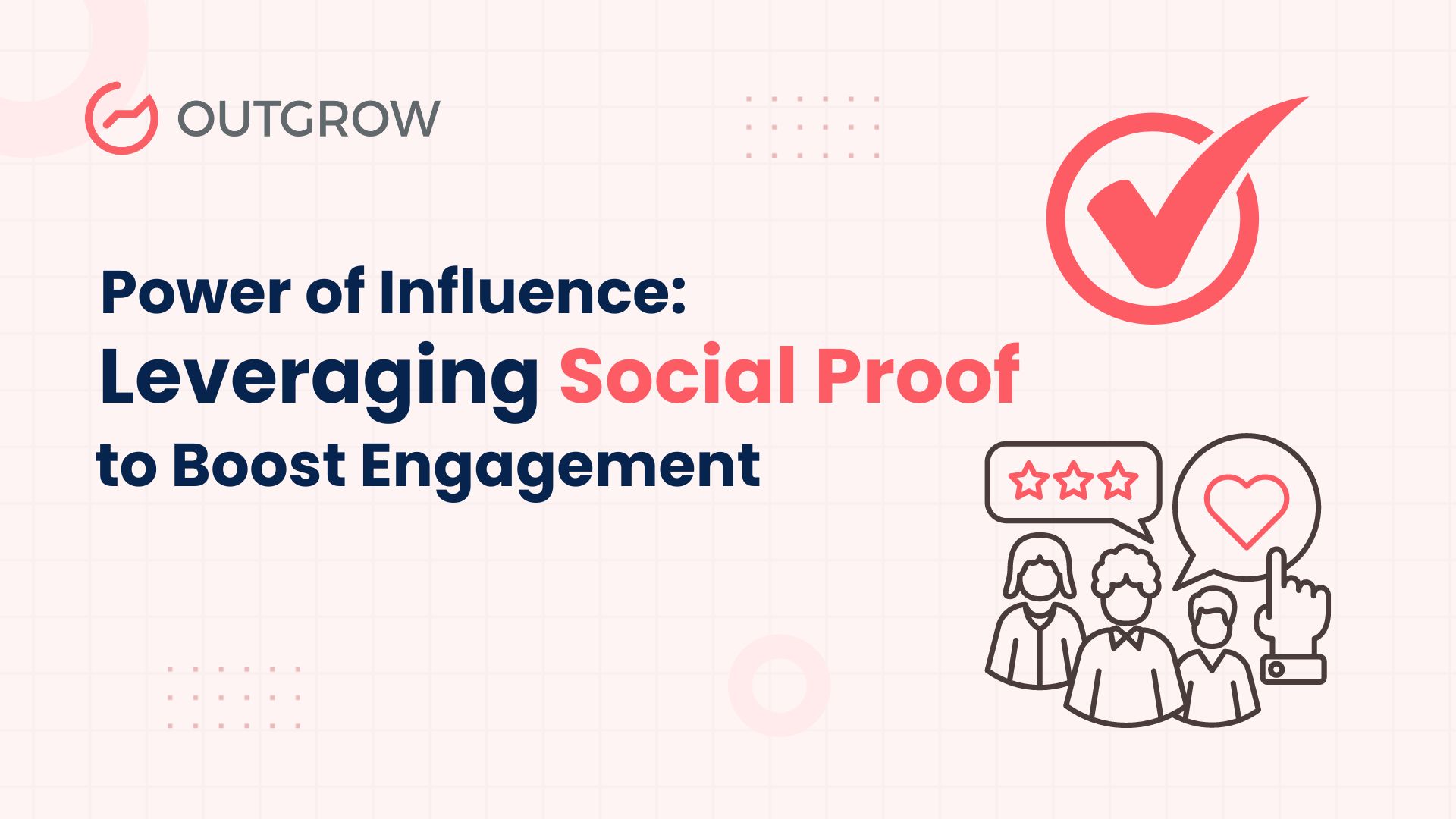The Power of Influence: Leveraging Social Proof to Boost Engagement
Table of Contents
Have you ever wondered what keeps a brand strong in today’s tough competition? No business can afford one-time customers after their marketing and branding efforts. And, to get returning and loyal customers, they need to establish trust and credibility amongst their audience. Social proof is one of the best ways to do this.
In this blog, we will dive deep into social proof, explaining how to use it, its examples, best practices, and much more.
But first, let’s tackle a fundamental question to set the stage.
What is Social Proof?
Social proof is when individuals observe and mimic the actions of others, particularly when they’re unsure about what to do themselves. It’s a psychological tendency rooted in the need for guidance and reassurance from others’ behaviors. It’s based on the idea that if other people are doing something or believe something, it must be the right thing to do or believe.
Social proof is present in various aspects of our life. When we see celebrity endorsements, customer testimonials, or high user ratings, it creates an impression of trustworthiness and popularity. It convinces users to purchase a product or subscribe to a service.
Let us now take a look at the different types of social proofs.
Types of Social Proofs
Social proof can be present in various forms in our day-to-day life. Some of its common types include:
- Expert Recommendations: Endorsements from respected individuals or organizations that are experts in their respective fields build trust and credibility.
- Celebrity Endorsements: Seeing celebrities use a product creates an impression of success and desirability.
- Customers: Testimonials and positive reviews from satisfied customers provide social proof of quality and reliability, helping potential buyers.
- Numbers: Statistics like “X people use this product” or “Y customers satisfied” create a sense of popularity and validation.
- Social media: Shares, likes, and comments indicate social approval and encourage others to engage.
- User-generated Content: Content created by customers, such as photos, videos, and testimonials, can be social proof of product satisfaction and brand loyalty.
- Case Studies and Success Stories: Detailed accounts of real-life success stories and case studies provide evidence of value and effectiveness, helping to overcome skepticism and objections.
Now that we know the types of social proof, let us look at some ways to use social proof in the real world and their use cases.
Real-world examples and use cases of social proof
Social proof is a powerful tool for businesses. By leveraging it, you can enhance your marketing efforts and build a loyal customer base. Here are some ways to master social proof wisely:
1. Customer Reviews
Social proof, being a powerful marketing tool, can influence consumer behavior. Customer reviews are one of the most effective tools for leveraging social proof. It can be used to gain valuable insights into how your product or service impacts real customers. According to a study by Brightlocal, 76% of consumers check out reviews of local businesses online regularly before making a purchase.
For instance, Amazon uses customer reviews to get social proof for their products.

2. Testimonials in Advertising
Testimonials in advertising are potent because they come from individuals who aren’t connected to a brand, making them more credible to potential customers than everyday people.
For example, Slack uses Vodafone’s testimonials on its homepage and in Slack’s advertising campaigns to build trust and credibility with potential customers.

3. Post on Social Media
Share videos or graphics highlighting the key takeaways from your case studies on top social media platforms.
Share positive comments, reviews, and mentions from social media platforms. However, ensure that the engagement is genuine and not artificially created. Authentic social media engagement promotes the credibility of your brand. To better understand the effectiveness of your social media efforts, consider using social media analytics tools. These tools help track engagement, measure the reach of your posts, and analyze the impact of your social proof strategy.
For example, Gillette posts customer photos with quotes about how Gillette products have helped them look and feel their best.

4. Include in Email Marketing
Use social proof in your email marketing campaigns to increase open rates and click-through rates. You can include customer quotes in your email subject lines or your email copy. According to a study by Referral Rock4, 70% of people trust “consumer opinions posted online,” even if done anonymously.
For example, LobsterGram includes customer reviews in their email newsletters to promote their products and services.

5. Share on Your Website
Display customer reviews and testimonials prominently on your website to build trust and credibility with potential customers. According to a study, 93.4% of online shoppers rely on customer reviews when researching online retailers they are not familiar with.
Showcase any awards, certifications, or recognitions received by your brand. These demonstrate your expertise, credibility, and commitment to excellence, enhancing trust with your audience.
Authenticity is key when leveraging social proof. Focus on showcasing genuine customer experiences and avoid fabricating testimonials or reviews. This leads to building trust and credibility with your audience.
Avoid manipulating or misleading customers with fake testimonials or reviews, as this can break trust and damage your brand reputation in the long run.
For example, TripAdvisor displays customer reviews on their website while promoting a package or a trip.

6. Respond to Reviews
Responding to reviews, both positive and negative, is a great way to show your customers that you care about their feedback. It portrays that you are committed to providing excellent service. By responding to reviews, you can also address any concerns or issues that customers may have. This helps you demonstrate your willingness to go above and beyond to ensure their satisfaction. According to an article by 5-star visibility, one of the best social proof marketing tips for your brand is to respond to reviews.
For example, Apple makes it a point to respond to customer queries or reviews promptly. This not only enhances customer satisfaction levels but also helps establish a form of trust between customers and the company.


Remember, social proof is a perfect marketing tool for businesses looking to establish themselves as a trusted and reputable brand. By leveraging reviews and testimonials, you can enhance your marketing efforts and build a loyal customer base.
7. Leverage Live Proof
Live Streaming offers immense social proof potential. Host Q&A sessions, product demos, or behind-the-scenes tours live on social media platforms. This allows viewers to interact directly, ask questions, and witness the value you offer in real-time, fostering trust and engagement. To ensure a seamless live streaming experience, businesses looking for a Muvi One alternative can explore platforms that support interactive features and offer customizable tools to match their brand’s needs.
For example, Chipotle, a fast food chain, uses Instagram Live to share recipes with its audience. Through these engaging sessions, Chipotle showcases its commitment to transparency and quality. It also invites customers to participate actively, fostering a sense of community and loyalty.
Additionally, by directly addressing customer inquiries and showcasing their culinary expertise, Chipotle strengthens its brand reputation and encourages repeat business.

8. Partner with Micro-Influencers
Big names are great, but micro-influencers can pack a punch too. They often have highly engaged communities and niche expertise, resonating deeply with specific target audiences. Partner with relevant micro-influencers to create authentic reviews, tutorials, or social media content showcasing your product/service in action.
But be sure to choose influencers who align with your brand and target audience. Collaborate with influencers whose endorsements will be perceived as authentic and credible by your audience. For example, if you sell Quickbooks hosting to CPAs, you should connect with accounting influencers to target niche and relevant audiences.
Also, you can take a look at Dollar Shave Club’s collaborations with smaller YouTube personalities for inspiration.

9. Gamify Your Proof
Turn customer engagement into a fun and rewarding experience. Create interactive quizzes, polls, or surveys where participants share their experiences. Or leverage preferences to create gamified experiences for your audience. This not only gathers valuable data but also helps create user-generated content, another important form of social proof.
For instance, Thompson and Morgan leveraged gamified contests to encourage customers to leave product reviews.

Talking of interactive content, you can leverage tools like Outgrow to create your interactive content in minutes. With multiple content type options available to engage your audience and the availability of no-code functionality, it does not get better than that.

No, wait, it does. Outgrow is offering a 7-day free trial with no credit info required!
By understanding the shared use cases and the best practices, you can aim to build trust, credibility, and loyalty with your audience while maintaining ethical standards in your marketing strategies.
But what good will it do if we can’t track our social proofing efforts?
How to Track Your Social Proofing Efforts
Tracking social proofing efforts involves monitoring various metrics and indicators to assess the effectiveness of your strategies. Here are some ways to track social proofing efforts:
Monitor Engagement Metrics
Keep an eye on metrics such as likes, shares, comments, and retweets on social media platforms. Higher engagement indicates that your social proof content is resonating with your audience. You can leverage tools like Google Analytics, Hotjar, Segment, etc., to monitor your engagement metrics.
Analyze Conversion Rates
Track the conversion rates of landing pages, product pages, or promotional campaigns that incorporate social proof elements. Look for increases in conversions to gauge the impact of social proof on driving customer actions.
Use UTM Parameters
Implement UTM parameters in the URLs of social proof content shared across different channels. This allows you to track traffic sources and measure the effectiveness of each social proof campaign or channel.
Track Referral Traffic
Monitor the amount of traffic coming from referral sources such as review sites, influencer partnerships, or customer testimonials. Analyzing referral traffic helps identify which social proof sources are driving visitors to your website.
Customer Feedback and Surveys
Collect feedback from customers to understand how social proof influences their purchasing decisions. Surveys and feedback forms can provide valuable insights into the perceived trustworthiness and impact of social proof content.
Analyze Sales Data
Examine sales data to identify patterns or trends following the implementation of social proof strategies. Look for correlations between social proof initiatives and increases in sales or revenue. If you run a large enterprise, knowing what is enterprise sales from A to Z will enable you to interpret these correlations more accurately and make informed decisions.
Review Platform Ratings and Reviews
Monitor ratings and reviews on third-party review platforms such as Google My Business, Yelp, or Trustpilot. Positive reviews and high ratings serve as external validation of your brand’s reputation and can influence prospective customers. Encourage employees to respond to reviews, especially those expressing gratitude or seeking clarification. Consider creating optional employee profiles, take their pictures, use a free background remover and add your branding colors or logo to ther profiles to increase trust.
A/B Testing
Conduct A/B tests to compare the performance of social proof elements against different variations or placements. Testing headlines, images, or testimonials can help optimize social proof content for maximum impact.
By tracking these metrics and analyzing the data regularly, you can evaluate the effectiveness of your social proofing efforts. You can make informed decisions to optimize your strategies for greater impact.
Conclusion
Social proof acts as a key that helps your marketing strategy reach its full potential. By leveraging the power of social proof, you pave the way to building trust, fostering customer loyalty, and establishing credibility among your audience.
This not only enhances the perception of your brand but also elevates the overall customer experience, ultimately leading to increased conversions and business success.
And who doesn’t want that? Let this blog be your guide to integrating social proofing seamlessly into your marketing strategy.
So, why wait? Start your journey towards higher conversions and lasting customer relationships that leverage social proofing now!





